Davy Crockett was one of the biggest characters to come out of the American frontier and one of the few to achieve national fame while still alive. While many stories circulated about the bear hunter from Tennessee amounted to tall tales, his actual life was absolutely wild without embellishment. It’s a shame, therefore, that Crockett hasn’t gotten a thorough, modern biopic. No filmmaker has endeavored to tell his actual life story, but they sure do love to tell the story of his death and the days leading up to it.
For now, if you want to get the true story of Crockett’s life, which lasted from 1786 to 1836, give David Crockett: The Lion of the West by Michael Wallis a read. The book cuts through almost two centuries of bullshit and paints a vivid, realistic, and fascinating portrait of an eternally restless man who was addicted to hunting, adventure, and travel — and a man who didn’t like being called “Davy.”
The character who worked his way into the collective American psyche in the 1950s is the pop-culture version of Crockett, who happily goes by Davy and prefers to be decked out in full buckskins and a coonskin cap regardless of the weather or setting.
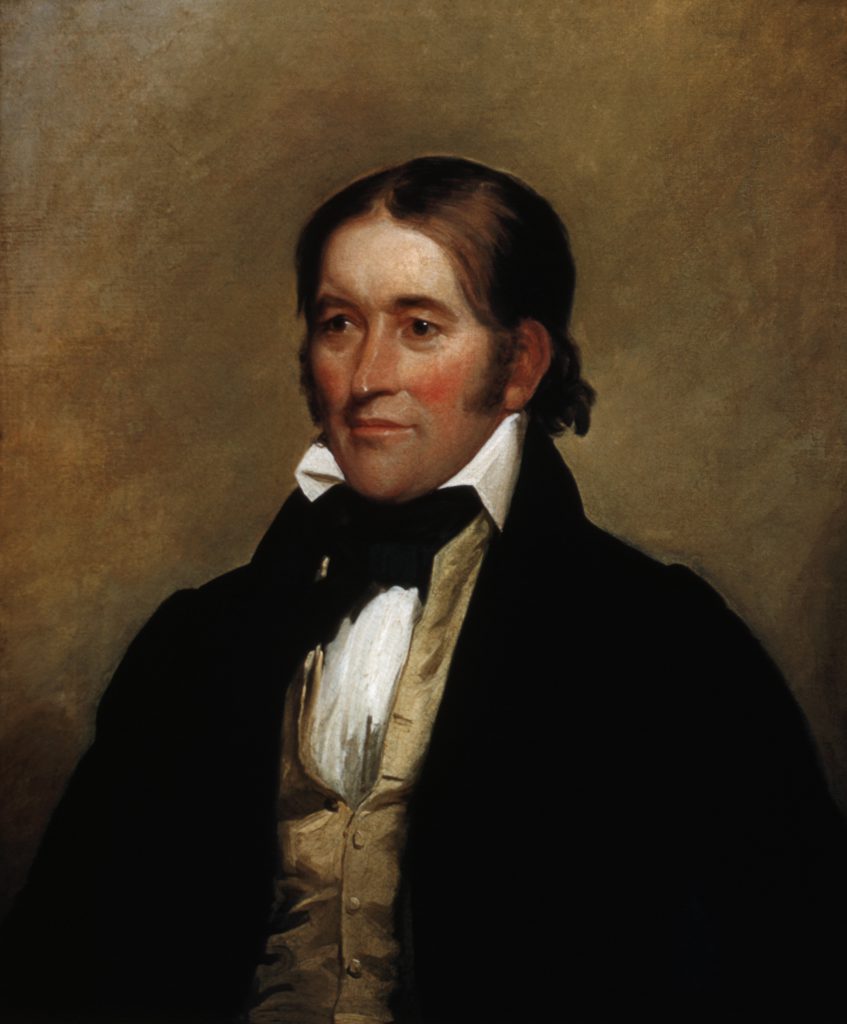
He’s a crack shot with his favorite rifle, Old Betsy. He is above all a fair and chivalrous man — a characterization supported by several maxims attributed to the real-life frontiersman turned “Indian Fighter,” turned US Congressman, turned Texian rebel:
“Be always sure you are right, then go ahead.”
“I have always supported measures and principles and not men.”
“I would rather be politically dead than hypocritically immortalized.”
“Whenever I had anything and saw a fellow being suffering, I was more anxious to relieve him than to benefit myself. And this is one of the true secrets of my being a poor man to this day.”
The following are the most notable depictions of Crockett in movies and TV, from Disney to The Duke to Billy Bob. Hopefully, they can tide us over until we get a proper David Crockett movie — I don’t think something like the treatment Hugh Glass got with The Revenant is out of order.
Davy Crockett in the Silent Era
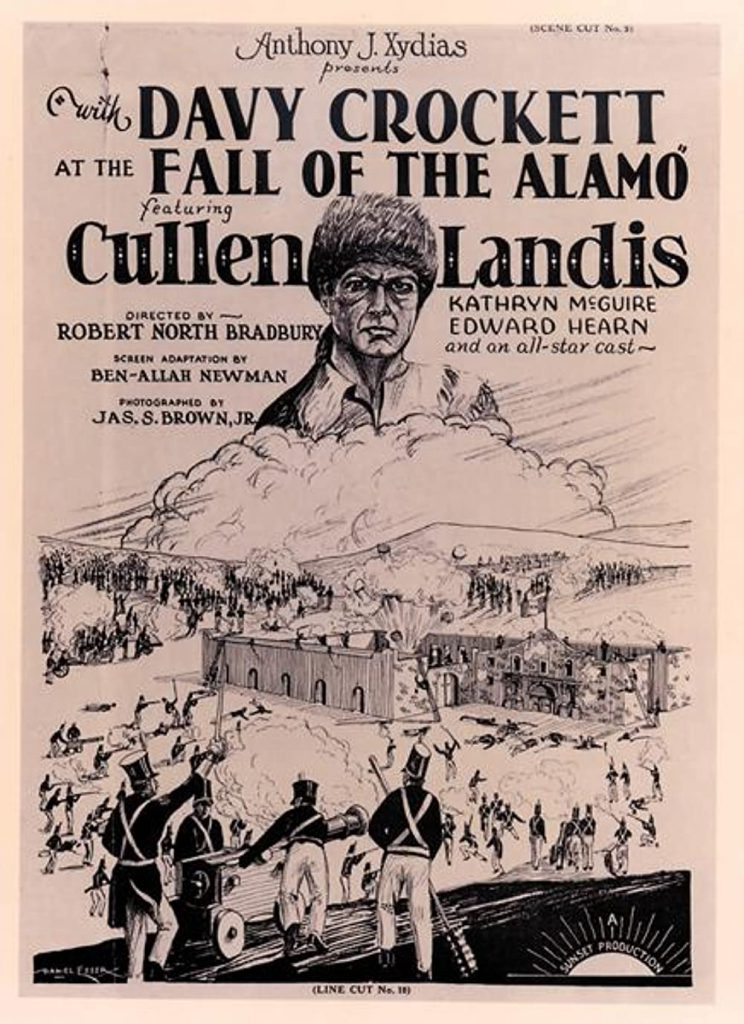
Stories of the American frontier and the Wild West were mined for material from the earliest days of silent filmmaking, including stories about Davy Crockett. He was first played on screen by Charles K. French in a 1909 romantic short called In Hearts United.
In 1916, Dustin Farnum played Crockett in the first movie version of his life story, titled simply Davy Crockett.
A few other silent-movie actors stepped into the role, including Cullen Landis, who played him in With Davy Crockett at the Fall of the Alamo (1926). After that, it was only talkies for Davy. Nearly all of Crockett’s on-screen appearances from the end of the silent film era to the 1950s were depictions of his famous last stand at the Alamo.
Disney, Fess Parker, and the 1950s
In 1950, George Montgomery played Crockett in Davy Crockett, Indian Scout, a short feature running just over an hour that depicted Crockett, from what I can tell from stills from the film, as a cowboy defending a wagon train with twin revolvers.
In 1954, Disney decided to add Davy Crockett to its roster of heroes on its TV series The Magical World of Disney, beginning with the short film Davy Crockett: Indian Fighter. It came with a catchy moniker for Crockett, “King of the Wild Frontier,” and a theme song that would become a hit record. This was before rock ‘n’ roll got big, and a ballad about a bear-killing frontiersman could hit the top of the charts.
When Marty first wanders around the 1955 version of Hill Valley in Back To The Future (1985), he sees a sign advertising “The Ballad of Davy Crockett” outside a record store. That’s the song below, which you can hear playing in the background of that scene for a few seconds.
Fess Parker was an instant hit as Crockett and went on to play him several more times over the next two years in more Disney shorts like Davy Crockett Goes to Congress, Davy Crockett and the River Boat Pirates, Davy Crockett’s Keelboat Race, and of course, Davy Crockett at the Alamo. Indian Fighter, Congress, and Alamo were later combined to form the feature-length film Davy Crockett: King of the Wild Frontier.
Other than a few cameos, that was the extent of Parker’s run as Crockett. Still, Disney liked him in the buckskins so much that he was tapped to star as another famous frontiersman in Daniel Boone. Parker pretty much wore the same costume and hat in the popular series, which ran for 165 episodes from 1964 to 1970.
The corny old Fess Parker Disney movies have a special place in my heart. My father loved them growing up and watched them on the family black-and-white TV as they aired for the first time, probably sitting cross-legged on the living room rug with his crew cut covered by an imitation coonskin cap.
When we got a free week of the Disney Channel back in the 1980s, the TV Guide told us they’d be airing all the Fess Parker Crockett movies. My dad promptly opened a fresh Maxell VHS tape and recorded every one of them, and I watched them all just about to death. When we went to Six Flags the next summer, I dragged my folks right to Frontier Land and begged for my own fake coonskin cap, which I then wore way too much.
One of my favorite moments from those old Disney movies comes in King of the Wild Frontier when Davy gets into a Robin-Hood-style shooting competition with flintlocks instead of bows against a surly dude called Bigfoot. On the first shot, both men shoot equally well. Crockett shoots second against his blowhard opponent during the tie-breaking round and fires quickly, much to the dismay of his partner Georgie Russel (played by Buddy Ebsen of The Beverly Hillbillies TV fame).
There’s only one hole in Crockett’s wooden target, and everyone thinks he missed the board completely. But when the scorekeeper digs into the hole with his knife, he pulls out two musket balls. Davy put his second shot right on top of his first for the win and did so with a humble smile. That’s boss.
Watching these old flicks again so many years later, I realize Parker’s acting is shaky in spots, the moral lessons are pretty on the nose, and the depictions of Native Americans are a bit racist (though Crockett is a staunch advocate for Native American rights throughout the movies) — but none of that makes me like them any less.
John Wayne’s Version of Crockett
In 1960, Crockett finally got a big-screen portrayal in The Alamo following the Crockett mania of the previous decade. He was played by none other than John Wayne, who also occupied the director’s chair for this sprawling Hollywood epic with huge sets, a cast full of big names, and lots of extras.
I’m not the biggest Wayne fan, but I have to admit, he did a fine job in this movie. His take on Crockett is quite different from Parker’s, who played him as a soft-spoken, seemingly affable country fella with an unassuming cunning and intelligence. Wayne’s version is a bit more boisterous, but he still has the characteristic Crockett humility and wiliness. However, once Wayne sheds the coonskin cap that he only wears for a few scenes, he just kind of turns into, well, John Wayne with a flintlock instead of a lever gun.
Of course, this story only focuses on the last chapter of Crockett’s life leading up to and during the Battle of the Alamo, where he met his ultimate fate alongside another frontier legend, Jim Bowie. Actually, let’s talk about Crockett’s death for a moment.
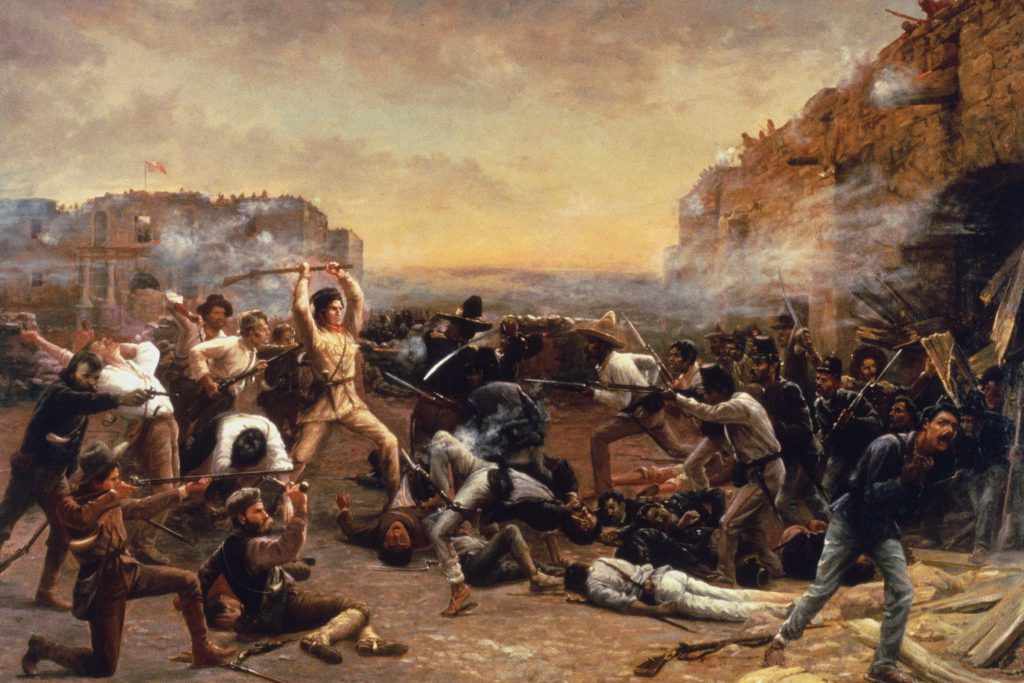
In the Disney version, Crockett goes out swinging his empty rifle atop a staircase being scaled by the entire Mexican army before the shot dissolves to a finale and a song. This send-off echoes the classic 1903 painting by Robert Jenkins Onderdonk, The Fall of the Alamo, which depicts Crockett wielding his rifle as a club against Mexican troops who have breached the mission’s walls.
In the Wayne version, Crockett does the same with a torch after the fort has been overrun. As he changes positions, constantly fending off enemy soldiers, he’s skewered clean through the chest with a pike. He staggers into the fort’s magazine, tosses his torch on the barrels of gunpowder stored there, and blows most of the mission building, and himself, to hell.
Nobody knows how Crockett really died. At the time, Gen. Santa Anna didn’t think of the battle at the Alamo as particularly noteworthy, other than it being a 13-day delay that ended up costing him a few hundred men.
Some accounts say five or seven defenders of the Alamo surrendered, and others say Santa Anna had them put to death. A few stories got around that Crockett was among the group that surrendered. On the contrary, at least one account from a cook who worked for Santa Anna’s officers said Crockett’s body was found surrounded by “no less than 16 Mexican corpses,” according to 13 Days to Glory: The Siege of the Alamo by Lon Tinkle.
It’s unlikely we’ll ever know what really happened at the Alamo beyond a shadow of a doubt. Hell, there are even conflicting numbers about how many people died on either side. Santa Anna claimed hundreds of Texans were killed while only a few dozen Mexican soldiers died. Several Alamo histories say Mexican casualties numbered 400 to 600 men and that between 182 and 257 people died attempting to hold the Alamo.
One man, Henry Warnell, is believed to have escaped the battle, only to die soon after from wounds he received as a courier. A version of Warnell was depicted as Smitty (Frankie Avalon) in The Alamo, and the audience sees the aftermath of the battle from his perspective.
The Lousy One
During the next few decades, Hollywood mostly forgot about Crockett. In the 1980s, he showed up a couple of times in forgettable fare like The Alamo: 13 Days to Glory (1987) and an episode of The Magical World of Disney called Davy Crockett: Rainbow in the Thunder (1988), in which fellow Tennessean Johnny Cash plays an aged Crockett. I just have to hunt that down. Crockett, played by Tim Dunigan, was a character in a few other forgettable Disney TV features from 1988-89.
Crockett got his most recent big-screen portrayal in yet another retelling of The Battle of the Alamo story, inventively titled The Alamo (2004), which plays like a crappy, boring remake of the 1960 version.
Billy Bob Thorton stepped into Crockett’s moccasins for this go-round, and he seemingly put his all into the role, but the finished product is a weak, uneven movie. The cinematography is unimaginative and stale, and the film’s overall poor pace causes it to drag painfully at times.
Crockett is portrayed as a slightly reluctant fighter who didn’t know exactly what he was getting into when he went to Texas but then fully commits to defending the Alamo. It does make a point of noting he preferred “David,” not “Davy,” and reveals Crockett to be a beast of a fiddle player.
In this one, Crockett dies after the battle, not during. He’s the sole survivor, taken prisoner by the Mexican army and brought before Santa Anna. When asked to formally surrender, he gives a defiant speech and is promptly bayonetted to death on his knees with his hands bound behind his back. Crockett doesn’t speak Spanish and has to talk to Santa Anna through a translator, which really takes the wind out of the scene and makes it the perfect ending for this dud of a movie.
The Future?
Will we get a new and better take on the life of David Crockett any time soon? Hollywood hates doing anything too original most of the time, so chances are we will. I’d love to see a series or a limited series tackle the King of the Wild Frontier’s life and really do his story justice. But who from today’s crop of actors would make a good Crockett?
Read Next: 10 of the Best Wilderness Movies Ever Made

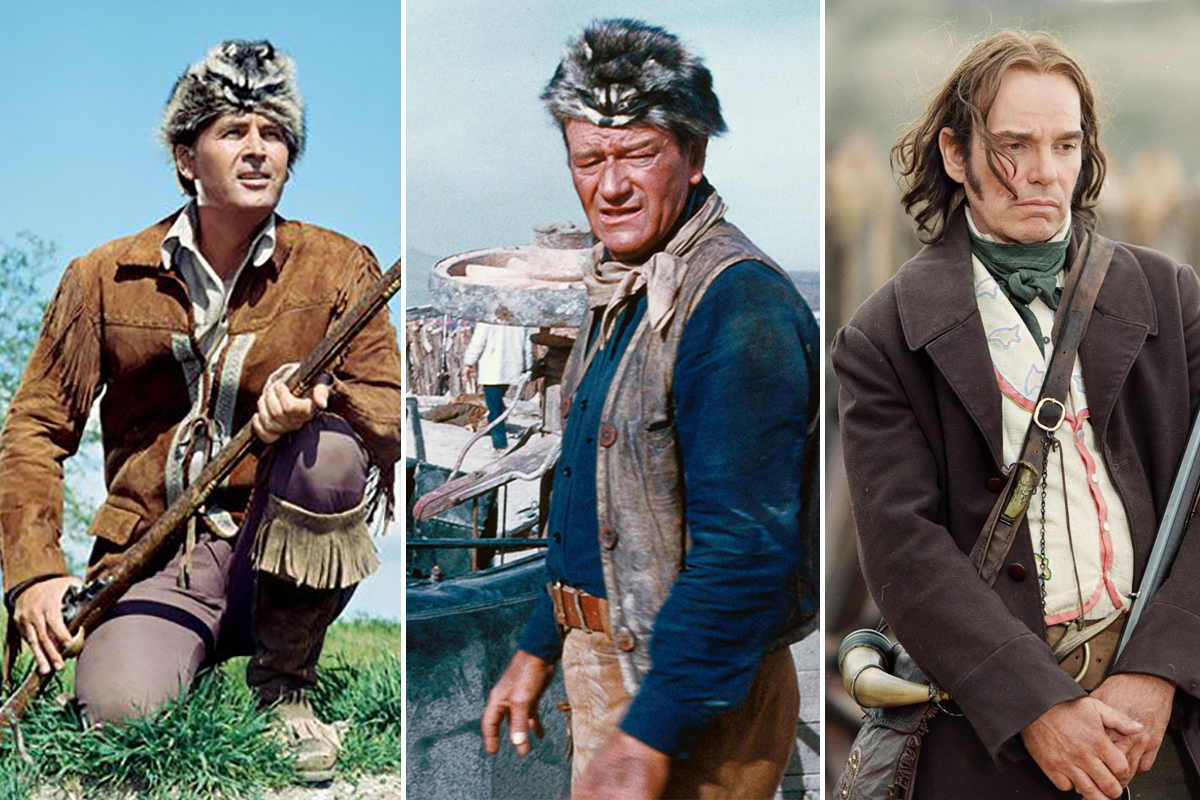
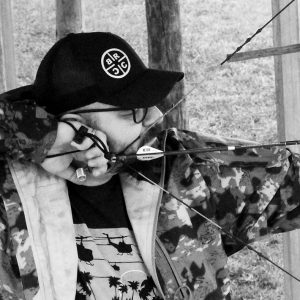

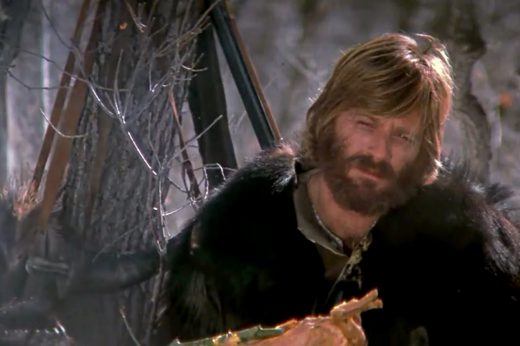
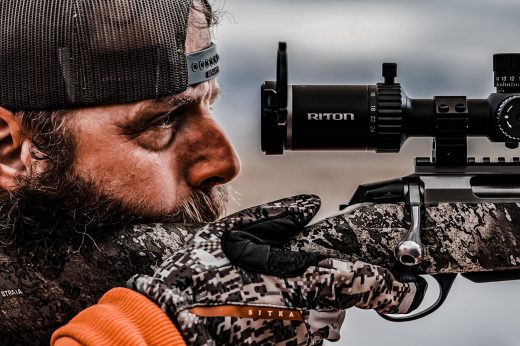


Comments